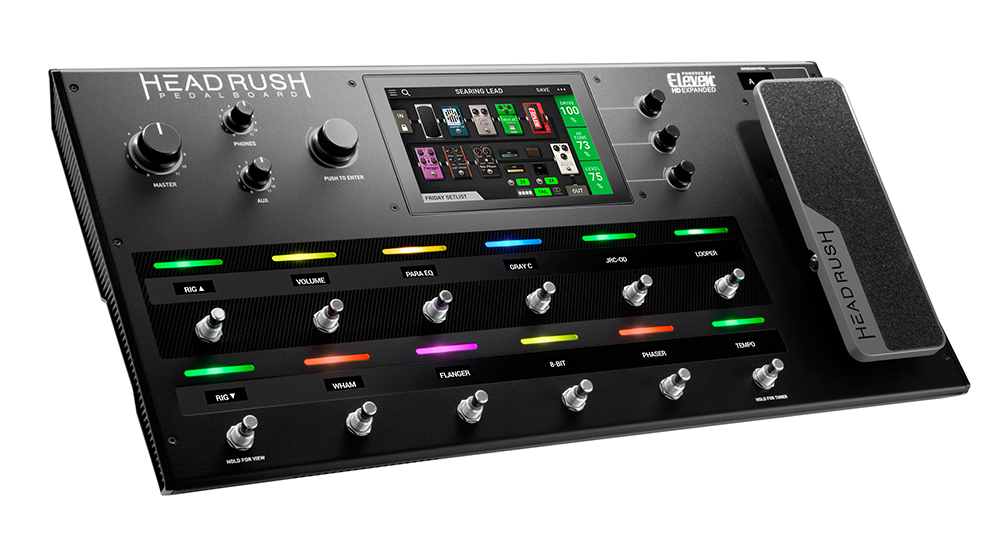I guess we should address the elephant in the room straight away: to the casual observer the HeadRush looks a heck of a lot like a Line 6 Helix. Everything from the size to the colour scheme to the layout seems very Helix-y. Given the development lead times with products like these, it’s entirely possible that it’s just a coincidence. This happens to be where guitar equipment design appears to be heading anyway, and clean lines, colour-changing LEDs and fullcolour touch screens are certainly logical inclusions on a digital processor in this day and age.
So when we strip that away, what do we have here? The HeadRush Pedalboard houses a finely-tuned quad-core processor and is powered by an exclusive Eleven HD Expanded DSP software – Avid’s ElevenRack being a pioneer in hyper-real digital amp models. HeadRush Pedalboard has 33 amp models, with about two thirds dedicated to vintage classics with not-so-subtle names like 66 AC Hi Boost, 59 Tweed Deluxe and 69 Plexiglass 100W. There are also hotter models like 92 Treadplate, SL-100 and RB- 01B.
There are cabinets in configurations from 1X8 all the way up to 8X10, with four 4X12 options, ten microphone types, six different distortion models including 8-Bit Crush, eight rotary effects, five dynamics/EQ options, 11 modulations, seven reverbs/delays and five expression effects including whammy and two wahs. And here’s a cool feature: you can load third-party impulse response files to the HeadRush Pedalboard for realistic speaker cabinet sounds.
HeadRush teamed up with Celestion to include an exclusive download to get you started, but the HeadRush Pedalboard also supports all common wave formats (wav, aiff), sample rates of up to 192kHz and bit depths of up to 32-bit. Connections include jacks for an additional expression pedal, an aux in, stereo XLR and 1/4” outs, amp/ line switch, phone jack, stereo FX loop with rack/stomp level switch, MIDI in and out/ thru and USB.
Let’s get to the most important stuff though: HeadRush Pedalboard feels pretty damn amp-like. It’s especially noticeable when you go from one of the small amp models to one of the big ones; the dynamic squish of the smaller amps gives way to a full-bodied, full-range roar. The great cabinet impulses no doubt play an important role in this, but let’s not discount the voicing and resolution of the models. There are plenty of processors with more effects, but HeadRush focuses on quality rather than quantity. The effects here sound great and they respond like the real deal, so you can have all sorts of fun running an overdrive into a JCM800 model and getting exactly the results you rightfully expect.
HeadRush Pedalboard is a great option for players who want the full power of digital control but are more concerned with amp-like response and sound than with making their guitar rig sound like R2-D2. Everything’s laid out to be very gig-friendly, and it makes a great recording setup too. It sits very comfortably among the other pro-level floorboards out there.

